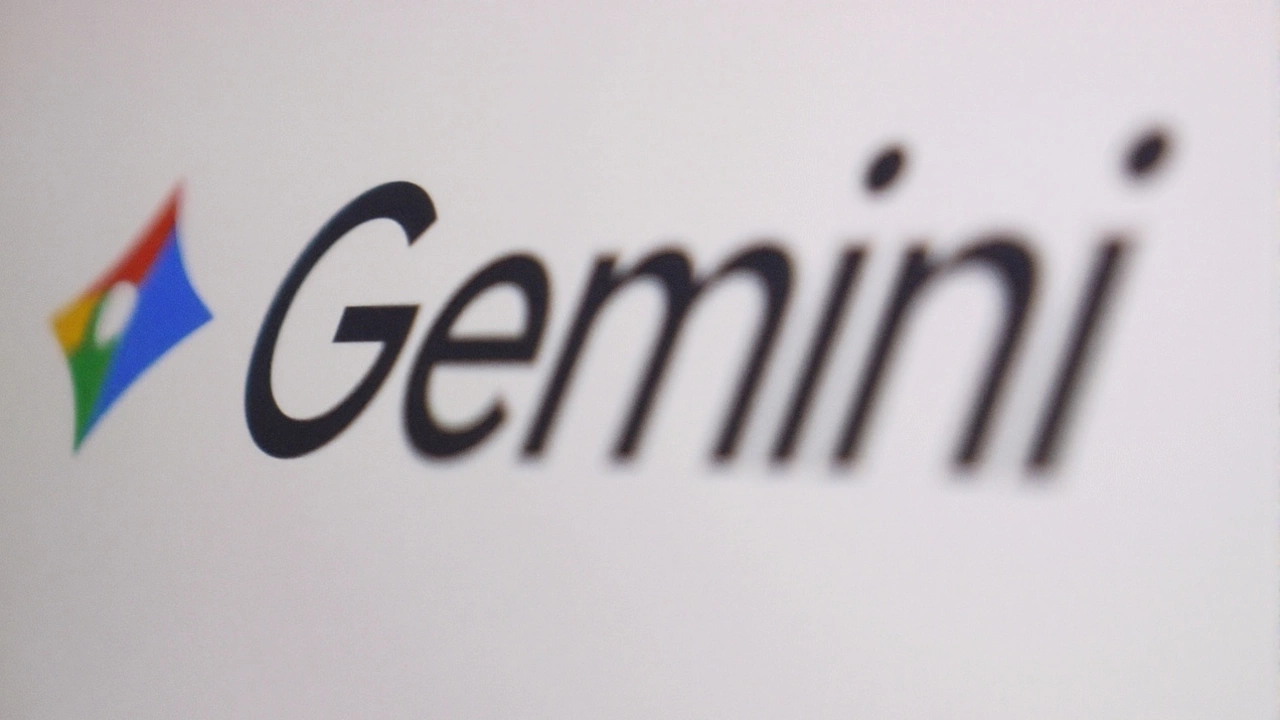Gemini’s most-requested feature is finally here: audio uploads
Users have been asking for it for months, and now it’s live. Google’s Gemini app can finally take audio files. Josh Woodward, a vice president at Google Labs and Gemini, confirmed the addition and called audio uploads the top user request. The feature rolls out on Android, iOS, and the web at the same time.
What’s new? You can feed the assistant common audio formats—MP3, WAV, and other standard types—and ask it to transcribe, summarize, or pull highlights. On desktop, you’ll see the familiar “Upload files” button. On mobile, tap “Files.” ZIP support is included too, so you can bundle multiple takes, interviews, or raw tracks into a single upload and keep your workspace clean.
This update closes a puzzling gap. The app already handled images, PDFs, and even video uploads. It could summarize YouTube clips and break down short videos. But audio—arguably the most common content type for meetings and interviews—was missing. Now it’s part of the toolkit.
There are limits, and they differ by plan. Free users can include up to 10 files per prompt, with a total audio length of 10 minutes per prompt, and they’re capped at 5 prompts per day. Subscribers on the AI Pro and AI Ultra tiers get far more room: up to 3 hours (180 minutes) of audio per prompt, still capped at 10 files per prompt. That’s enough for a full interview day or a multi-episode podcast batch in one go.
Woodward positioned the launch as a workflow fix, not just a shiny feature. Teams who were juggling a transcription app, a note-taking tool, and a separate editor can now push recordings directly into the assistant. No exporting, no reformatting, no copy-paste gymnastics.
In hands-on testing, the system handled a mix of audio—phone calls, interviews, even sketches—with solid accuracy. It stumbled on some proper names, which is common for speech models, but it still identified key points, pulled action items, and flagged notable quotes. For everyday use, that’s the difference between an hour of manual cleanup and a clean summary you can edit in minutes.
Practically, this puts Google Gemini much closer to feature parity with ChatGPT, which has offered audio uploads and transcription for a while. If you’ve been waiting to move more of your content work into one app, this is the missing piece.

What it changes for teams, and how to use it well
For marketers, editors, and producers, audio uploads collapse a messy workflow into one prompt. Weekly content meetings become briefs and task lists. Podcast recordings turn into show notes and pull quotes. Webinar replays become highlight reels and email drafts. You’re not hopping between three services just to get a transcript and a summary.
Agencies and content networks get the biggest time savings. You can zip together multiple takes or entire batches—intros, mid-rolls, interviews—and ask the model to create a structured outline, a list of standout moments, and a set of social captions. If you’ve ever spent a Friday wrangling audio into a package, this reduces the friction.
Sales and customer teams can run discovery calls through the app and ask for objections, pain points, and next steps. Product managers can process customer interviews and ask for feature requests by theme. Researchers can turn a long roundtable into a concise memo. None of this is flashy; it’s the daily grind where time disappears.
The limits matter, though. Ten minutes per prompt on the free tier is fine for a voice note or a quick field interview, but it won’t cover a full meeting. That’s likely by design. If your typical recording runs 30 to 60 minutes, the paid tiers are where this feature really opens up. Three hours per prompt is enough for a longform interview, a panel, and a post-mortem in one upload.
There’s also a practical cap of 10 files per prompt across all plans. That keeps things organized, especially when you’re mixing formats. You can still include a document or two alongside audio—say, a slide deck and the meeting recording—and ask for a combined summary that references both.
Here’s how to try it:
- On the web: Click “Upload files,” select your audio (MP3, WAV, or a ZIP with multiple files), add a short instruction like “Summarize and list action items,” then submit.
- On Android or iOS: Tap “Files,” choose recordings from your device, and add your prompt. If you have several takes, zip them first and upload the archive.
- For longer projects: On paid plans, combine sessions up to 3 hours in total per prompt. Ask for a structured outline, timestamps, or a draft brief.
What should you ask it to do? Start with the basics: “Transcribe the audio, then summarize the top five takeaways.” Add more structure: “List speaker questions and answers,” “Pull quotes suitable for social,” or “Draft a follow-up email with decisions, owners, and deadlines.” The model does well when you spell out format and tone.
Quality still depends on the recording. Clear speech, low background noise, and a single mic source will produce cleaner transcripts. Cross-talk, heavy accents, and noisy rooms can nudge error rates up, especially with names and acronyms. If a name matters, include it in your prompt so the model spells it right.
One handy use: turn a strategy call into a short brief and a task list. Ask for a bulleted outline, a list of blockers, and any data points mentioned. Then ask for risks or missing info the team should track down. You’ll get a tidy package that saves you from reliving the entire recording.
Another: build a quick content kit from a podcast episode. Request a two-paragraph synopsis, three pull quotes, a headline and subhead, and a caption for each major platform. If you’re publishing across a network, that’s the difference between shipping today and slipping to tomorrow.
Compared to the pre-audio era, this is a different product. Before, you could upload a PDF or a short video and get a useful readout, but anything spoken required a detour to a transcription app. Now the assistant can take the raw input as-is. That reduces error chains from format conversions and keeps everything inside one interface.
It also nudges the app closer to competitors. ChatGPT has supported audio uploads and transcription for months. Microsoft’s tools lean on similar capabilities. By closing this gap, Google makes the choice less about checkboxes and more about where you keep your data and how each model performs on your specific content.
Capacity is the other mover. The free tier is generous for casual use, but the five-prompts-a-day limit will hit anyone doing real production. If your week includes back-to-back calls and long interviews, the paid tiers will feel like table stakes. Three hours per prompt lets you batch, which is the only way this scales.
ZIP support is a quiet win. If you record in segments—intros, main, outro—you don’t have to upload and manage each file by hand. Bundle them, upload once, and tell the model how to treat each segment. For interviews, throw in a raw track and a cleaned track and ask which one yields the better transcript. You can choose based on the output you need.
What about video? The app already supports it, with limits that differ by plan—short clips for free users, longer uploads for paid. Audio now sits alongside those options, which makes the product feel genuinely multimodal: text, images, PDFs, video, and now audio in one place.
For teams thinking about rollout, a few practical tips help:
- Standardize file names so you can search later. Use a pattern like YYYY-MM-DD_client_topic_take01.mp3.
- Add a short instruction with context every time. “Quarterly planning call for the marketing team; extract goals by channel.”
- Decide on output formats up front—bullets, table-like lists, or narrative paragraphs—so you get consistent results across projects.
- Keep sensitive data in mind. Meeting audio often includes personal or confidential details. Check your organization’s policies before uploading.
In newsroom workflows, this change is immediate. Reporters can upload a phone interview, ask for a clean transcript, then a list of quotes and contradictions. Editors can request a summary with unresolved questions for follow-up. For longer projects, batch sessions into themed ZIPs—policy, personal story, expert analysis—and ask the model to compare perspectives.
Education and training teams get similar gains. Record a workshop, upload the audio, and ask for learning objectives, a recap, and a short quiz. If the recording includes multiple examples, ask the model to tag them by topic and difficulty so you can build lesson plans faster.
Customer research benefits too. Upload support calls and ask for common problems by product area. Then ask for suggested fixes and links to internal docs you can add later. It turns a pile of recordings into a prioritized to-do list for product and support.
Is this perfect? No. Names and jargon can trip the model. Accents and overlapping voices still challenge most speech systems. And if you’re on the free plan, the 10-minute ceiling will feel tight for anything beyond a quick check-in. But as a baseline feature, it’s a big leap from where the app was even a few weeks ago.
The business story is simple: audio is table stakes for a modern assistant. Meetings, podcasts, sales calls, webinars—so much of work and content lives in sound. Bringing that into the app closes a hole and makes the rest of the product more useful. You can now move from raw input to working draft without leaving the same chat.
As for what’s next, users will likely ask for deeper controls: better handling of multiple speakers, optional timecodes, and more granular exports. Today’s launch sets the base. With audio onboard, the assistant finally matches how people actually work—multimodal, messy, and fast.

